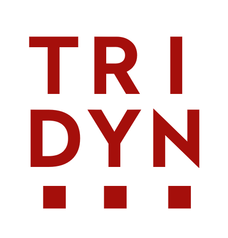Resource Optimisation
Where there is fixed resource and variable demand we run the risk of using the available resources to respond to emergencies of the daily flux and chaos.
Resource optimisation is the set of processes and methods to match the available resources (human, machinery, financial) with the needs of the organization in order to achieve established goals. Most organisations believe they operate with optimised resource yet suffer from poor performance and creeping cost overruns.
The solution to this resource dichotomy needs to consider the business, cultural and behavioral aspects alongside the technical and new technologies. The high level strategic goals need to match the operational incentives of the workforce, and systems need to measure and monitor the correct metrics to ensure deviations are caught early.
The Balancing Act... every day
Most organisations do not have enough resource, or the right skilled resource, or in the right location, to deliver on all of their commitments. As the organisation becomes more complex the juggling act of which resource to apply to which job and when becomes exponentially difficult to manage. This is where the combination of AI/ML and Dynamic Digital Twins can help optimise resource allocation to achieve better outcomes.
Know which KPIs are important
When creating predictive and prescriptive models the foundations need to be solid. This means that a clear understanding of the KPIs and value drivers within the organisation is needed, ad well as which data feeds these KPIs. These need to be expressed, and their impact understood, at each level in the organisation. Staff performing operations need their KPIs to be linked back to Directors & Managers using strategic & tactical KPIs. Data collection and analytics then needs to collect data at all of these KPI levels so that progress can be monitored and Predictive models populated.
Historic data analysis for predictive allocation
Analysis of historic data using AI/ML techniques exposes insights hidden within large data sets. For Predictive models to be useful it is typical to join many data sets together and generate multiple outputs. These are expressed as charts and graphs on dashboards and is only descriptive. To make them prescriptive they must be 'run forward' in some manner. To do this the descriptive output is converted into a mathematical model. This model when applied to say an asset, job or resource, and re-calculated will predict the likely future state. So, how long a job is likely to take, when an asset is likely to fail, how many resources are needed.
Dynamic model
A predictive model by itself only provides answers for what will happen with this KPI if we 'carry on as we are'. The organisations problem is 'what can we do' to improve? This is especially acute when there is limited resources, time or money! This is where a Dynamic Digital Twin comes in. It uses the mathematical outputs of Predictive models, the descriptions of Resources, Assets, costs and Jobs to be done, linked together to describe their dependencies and the processes undertaken to deliver them. The Dynamic Digital Twin can then simulate the business processes and calculate how many jobs can be done, what resource is needed where, how much it will cost and what any shortfall may be. This can be calculated for the current business load or simulated for different loads or conditions.
Optimisation and scenarios
The Dynamic Digital Twin enables the organisation to understand the levers it can pull to achieve its aims. Can resource be moved around, or retrained. What lag time on retraining is there and how much will back filling cost? What happens if we have a different priority to fixing jobs or maintaining assets. These questions and more 'what if' scenarios can be asked of the Twin by using Optimisation AIs and Monte Carlo/Latin Hypercube analysis. These techniques use iterative AI/ML techniques to search through the available actions with the question defined as a set of goals or targets. This Prescriptive analysis builds on all previous steps so reports the predicted KPIs for the scenario, which jobs to address and in what order, and how much it will cost or generate in revenue should that set of actions be taken. By running several scenarios a comparison of different strategies can be presented, and the sensitivity of the outputs presented. This provides a rich and powerful picture for Mangers to make their decisions.
Operational Digital Twin
How can this be used in an operational setting?
Firstly the time period of the simulations and predictions can be anything! minutes, hours, days, months, years. Work our founders have been involved with has predicted the impact of rainfall in the coming hours to the impact of water availability over 120 years!
To operationalise the Dynamic Digital Twin we need to;
- Understand the operational levers
- Ensure we have a regular supply of up to date data
- Run the Twin to math the pace of the business
- Use the outputs or record where we have deviated
For example, a Twin that is managing scheduling of Vans to visit properties would need to be run for the week to understand overall load and 2-4 times a day to deal with intra-day issues. It would be linked to live journey times to help re-schedule visits based on traffic. Manual overrides fed in through the day would show where subsequent days would need more support, or different skills in different areas. Integrated with operational dispatch systems automatic re-prioritisation of visits could be managed. This results in an optimal deployment of limited resource and a forewarning of likely shortfall so that operational managers can take key resourcing decisions earlier.
What are all these acronyms anyway?
Digital Twins, Artificial Intelligence/Machine Learning and Analytics technologies are not off the shelf or pre-packaged solutions. Their very definition is unclear - ranging from 3D building visualisation through to complex simulation and to dashboards. Providing clarity is part of our mission.

